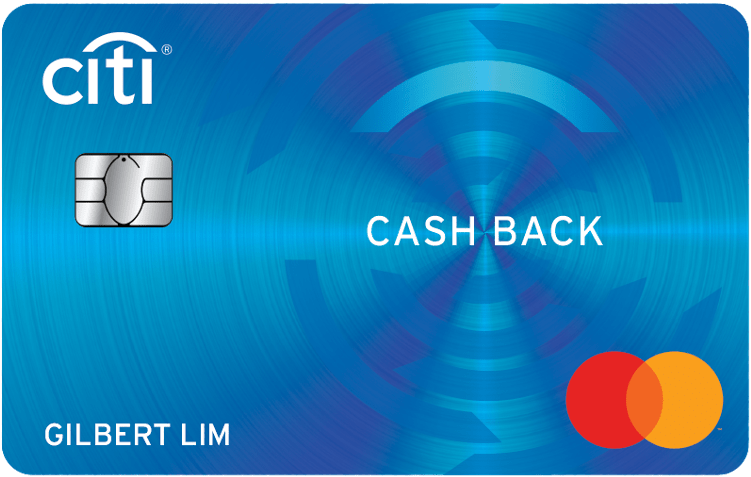
Click Here To See The Latest Singapore Inflation Data
| Category | Year-on-year Data
(Jan 2024 vs Jan 2023) | Month-on-Month Data
(Jan 2024 vs Dec 2023) |
|---|---|---|
| Headline Inflation Rate | +2.9% | -0.7% |
| Mas Core Inflation | +3.1% | +0.6% |
| Food | +3.3% | +1.0% |
| Transport | +2.3% | -2.1% |
| Clothing and Footwear | +0.5% | +3.1% |
| Communication | +3.6% | +0.8% |
| Housing & Utilities | +2.4% | -2.1% |
| Recreation and Culture | +4.4% | -3.3% |
| Household Durables & Services | +0.9% | +0.4% |
| Education | +3.2% | +1.9% |
| Health Care | +4.6% | +0.9% |
| Miscellaneous Goods & Services | +2.6% | +1.1% |
| Source: Singapore Department of Statistics | ||
As we can see from the data above, inflation levels have continued to steadily increase into 2024. Headline inflation, which measures the total inflation rate in an economy, has increased by 2.9% year-on-year but decreased 0.7% from the month prior. MAS core inflation, which excludes the costs of accommodation and private transport, has risen by a slightly higher 3.1% year-on-year and 0.6% month-on-month.
All spending categories used to measure inflation in Singapore have risen since a year ago. Transport, housing and utilities and recreation and culture costs have decreased slightly since December 2024.
How Do We Measure Inflation?
The Consumer Price Index, or CPI, is the most commonly used metric when discussing inflation. The CPI measures the change in the general prices of goods and services within an economy from year to year. A variety of survey methodologies are used in measuring the CPI, such as taking price samples of different goods and weighting said goods based on how much of it the average individual consumes. The more we consume a good, the larger the impact an increase in the price of said good will have on our purchasing power and hence the larger its weightage within the CPI.
We see the weightage of different types of goods and services used in constructing the CPI basket in Singapore in the infographic below.

A steady level of 2% inflation signals a healthy economy. Inflation starts to become worrisome when it reaches levels higher than this target range, much like the 4-5% inflation levels we were experiencing in Singapore in 2023.
This unsustainable rise in prices can signal that the economy is overheating which can greatly hurt households, especially if inflation starts to outpace any increase in wages. In this sense, inflation erodes people’s purchasing power, causing them to not be able to consume as many goods and services as they may need or want, affecting their desired standard of living.
Related: 3 Ways to Save Money Amidst Rising Inflation in Singapore
How Does High Inflation Impact Us
Inflation erodes the value of our money. Historically, the inflation rate for consumer goods in Singapore has ranged from -1.8% to 22.4% between 1961 and 2022, with an average of 2.6% per year.
Even at this modest level of inflation, we have seen a 350.53% increase in prices of consumer goods in Singapore from 1961 to 2023. An item you would have to pay S$100 to buy in 1961 would cost you S$450.53 today.
We mainly see the effects of inflation in two ways. Firstly, goods will become more expensive and the cost of living will increase. We have already begun to feel this in Singapore with the price of everything from our daily hawker centre meals to public transport fares increasing in the past few months.
Secondly, the money we have saved in the bank will have less purchasing power in the future as inflation keeps rising. Our hard-earned money that we have saved tirelessly will not be able to afford us the same luxury in the future as it does now. This can have a great effect on all your major financial milestones, including saving for the downpayment of your first home (remember inflation affects home prices too) as well as how much you have to build up your retirement nest egg to sustain you in your golden years.
Related: Is It Enough to Retire with S$6,000 In Monthly Expenses Given The Current Inflation Rate?
What Can You Do To Protect Yourself Against The Effects Of Inflation
While we have no control over the changes in general prices of goods and services, there are ways that we can stretch our money to reduce the impact these rising prices have on our purchasing power.

Shop Smart By Making Use Of Cashback Credit Cards
One direct way you can downplay the effects of inflation is to make use of cashback credit cards. There are a lot of cashback credit cards that reward you when you spend on everyday purchases such as dining, online shopping or your weekly groceries. Making use of such products is extremely helpful when trying to counteract some of the price increases due to inflation.
One great example of such a credit card is the Citibank Cashback credit card. It gives you 6% cashback on your spending at restaurants and cafes worldwide, 8% cashback on groceries and supermarket spending worldwide and 20.88% cashback at Esso and Shell petrol stations.
Similarly, the UOB One credit card is another great option which gives you up to 15% cashback at selected partners such as Shopee, Cold Storage, Giant, Guardian and even SimplyGo. Making use of these high-interest cashback credit cards allows you to dampen the effects of inflation by rewarding you a percentage of your monthly expenditure, offsetting some of the rise in prices of goods and services.
Citi Cash Back Card
Great cash back card for average spenders looking to benefit from everyday purchases.

Pros
- Great dining and groceries rewards
- High petrol discounts
Cons
- Lacks shopping and entertainment rewards
- Not suitable for lower budgets
UOB One Credit Card
Maximum cashback for stable budgets.

Pros
- Good fit for budgets of at least S$2,000 per month
- Easy cashback on daily spend
- Gives rebates for paying bills
Cons
- Doesn't fit inconsistent budgets
- Annual fee
Compare The Best Credit Cards in SingaporeFind Out More
Related: How To Maximise Credit Card Rewards And Beat Inflation

Protect Your Savings with High-Yield Savings Accounts
Prevent your savings from being eroded away by protecting it in a high-yield savings account. This is vital for more long-term financial goals such as saving up for your first home or saving towards your retirement as inflation is worst felt over long periods of time when the price increases will have the greatest compounding effect.
Making use of a good, low-hurdle, high-interest savings account like the UOB One savings account is a great first step at safeguarding your money from the effects of inflation. With an effective interest rate of 5% p.a., the UOB One savings account effectively matches current inflation rates so that the real value of your money (i.e. the value of your money after taking into account inflation) does not decrease over time.

Invest In Assets That Act As Stores of Value
Another way to diversify your investment portfolio and preserve your wealth is to make use of asset classes that can act as stores of value. An asset is considered a store of value if it is able to maintain its value without depreciating. This means that the asset should be able to be saved, retrieved and exchanged in the future without its value decreasing.
Gold is a classic store of value asset. As gold is a physical commodity, its price is not as greatly influenced by central banks’ monetary policies and changing interest rates compared to asset classes like stocks or bonds. Gold has proven to stand the test of time with the price of gold steadily increasing over the past few decades.
If you have significant cash savings and are worried about its purchasing power being eroded but are also not interested in the risk that comes with investing in stocks, investing in gold, either through more traditional means such as buying physical gold or in more convenient methods such as buying a gold-backed ETF, is a great way to diversify your portfolio to make it even more inflation resistant.
Related: Gold Goes Bullish – Should You Boost Your Portfolio Allocation For This Commodity?
Compare Online Brokerages in SingaporeFind Out More
Conclusion
While inflation may seem like a beast that you cannot run from, there are many ways we as individuals can be proactive in making the most of the current economic situation. If you would like to know more about different ways you can invest to get ahead of the curve, check out our blog with all of our latest investing content and create an online brokerage account today to get started on your investing journey.
Compare The Best Credit Cards in SingaporeFind Out More
Read More:
Cover image source: Pexels

This content is for informational purposes only, you should not construe any such information or other material as legal, tax, investment, financial, or other advice. Nothing contained on our Site constitutes a solicitation, recommendation or endorsement by AMTD PolicyPal Group in this or in any other jurisdiction in which such solicitation or offer would be unlawful under the securities laws of such jurisdiction.
This advertisement has not been reviewed by the Monetary Authority of Singapore.
Under AMTD Digital, AMTD PolicyPal Group consists of PolicyPal Pte. Ltd., Baoxianbaobao Pte. Ltd., PolicyPal Tech Pte. Ltd., and ValueChampion.

